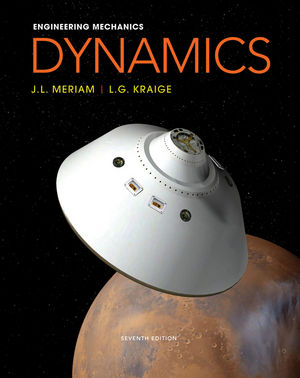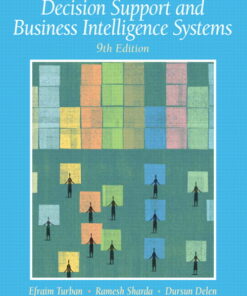Solution Manual for Engineering Mechanics: Dynamics, 7th Edition by J. L. Meriam L. G. Kraige ODD NUMBER PROBLEMS SOLUTIONS ONLY
$55.00
Solution Manual for Engineering Mechanics: Dynamics, 7th Edition, by J. L. Meriam, L. G. Kraige,, ODD NUMBER PROBLEMS SOLUTIONS ONLY
You will receive this product within 24 hours after placing the order
Solution Manual for Engineering Mechanics: Dynamics, 7th Edition, by J. L. Meriam, L. G. Kraige,, ODD NUMBER PROBLEMS SOLUTIONS ONLY
You are buying Solution Manual. A Solution Manual is step by step solutions of end of chapter questions in the . Solution manual offers the complete detailed answers to every question in at the end of chapter. Please download sample for your confidential.
Part 1 Dynamics of Particles.
Chapter 1: Introduction to Dynamics.
1.1 History and Modern Applications.
1.2 Basic Concepts.
1.3 Newton’s Laws.
1.4 Units.
1.5 Gravitation.
1.6 Dimensions.
1.7 Solving Problems in Dynamics.
1.8 Chapter Review.
Chapter 2: Kinematics of Particles.
2.1 Introduction.
2.2 Rectilinear Motion.
2.3 Plane Curvilinear Motion.
2.4 Rectangular Coordinates (x-y).
2.5 Normal and Tangential Coordinates (n-t).
2.6 Polar Coordinates (r-?).
2.7 Space Curvilinear Motion.
2.8 Relative Motion (Translating Axes).
2.9 Constrained Motion of Connected Particles.
2.10 Chapter Review.
Chapter 3: Kinetics of Particles.
3.1 Introduction.
Section A: Force, Mass, and Acceleration.
3.2 Newton’s Second Law.
3.3 Equation of Motion and Solution of Problems.
3.4 Rectilinear Motion.
3.5 Curvilinear Motion.
Section B: Work and Energy.
3.6 Work and Kinetic Energy.
3.7 Potential Energy.
Section C: Impulse and Momentum.
3.8 Introduction.
3.9 Linear Impulse and Linear Momentum.
3.10 Angular Impulse and Angular Momentum.
Section D: Special Applications.
3.11 Introduction.
3.12 Impact.
3.13 Central-Force Motion.
3.14 Relative Motion.
3.15 Chapter Review.
Chapter 4: Kinetics of Systems of Particles.
4.1 Introduction.
4.2 Generalized Newton’s Second Law.
4.3 Work-Energy.
4.4 Impulse-Momentum.
4.5 Conservation of Energy and Momentum.
4.6 Steady Mass Flow.
4.7 Variable Mass.
4.8 Chapter Review.
Part 2 Dynamics of Rigid Bodies.
Chapter 5: Plane Kinematics of Rigid Bodies.
5.1 Introduction.
5.2 Rotation.
5.3 Absolute Motion.
5.4 Relative Velocity.
5.5 Instantaneous Center of Zero Velocity.
5.6 Relative Acceleration.
5.7 Motion Relative to Rotating Axes.
5.8 Chapter Review.
Chapter 6: Plane Kinetics of Rigid Bodies.
6.1 Introduction.
Section A: Force, Mass, and Acceleration.
6.2 General Equations of Motion.
6.3 Translation.
6.4 Fixed-Axis Rotation.
6.5 General Plane Motion.
Section B: Work and Energy.
6.6 Work-Energy Relations.
6.7 Acceleration from Work-Energy; Virtual Work.
SectionC: Impulse and Momentum.
6.8 Impulse-Momentum Equations.
6.9 Chapter Review.
Chapter 7: Introduction to Three-Dimensional Dynamics of Rigid Bodies.
7.1 Introduction.
Section A: Kinematics.
7.2 Translation.
7.3 Fixed-Axis Rotation.
7.4 Parallel-Plane Motion.
7.5 Rotation about a Fixed Point.
7.6 General Motion.
Section B: Kinetics.
7.7 Angular Momentum.
7.8 Kinetic Energy.
7.9 Momentum and Energy Equations of Motion.
7.10 Parallel-Plane Motion.
7.11 Gyroscopic Motion: Steady Precession.
7.12 Chapter Review.
Chapter 8: Vibration and Time Response.
8.1 Introduction.
8.2 Free Vibration of Particles.
8.3 Forced Vibration of Particles.
8.4 Vibration of Rigid Bodies.
8.5 Energy Methods.
8.6 Chapter Review.
Appendix A: Area Moments of Inertia.
Appendix B: Mass Moments of Inertia.
B.1 Mass Moments of Inertia about an Axis.
B.2 Products of Inertia.
Appendix C: Selected Topics of Mathematics.
C.1 Introduction.
C.2 Plane Geometry.
C.3 Solid Geometry.
C.4 Algebra.
C.5 Analytic Geometry.
C.6 Trigonometry.
C.7 Vector Operations.
C.8 Series.
C.9 Derivatives.
C.10 Integrals.
C.11 Newton’s Method for Solving Intractable Equations.
C.12 Selected Techniques for Numerical Integration.
Appendix D: Useful Tables.
Table D.1 Physical Properties.
Table D.2 Solar System Constants.
Table D.3 Properties of Plane Figures.
Table D.4 Properties of Homogeneous Solids.
Index
Problem Answers
Be the first to review “Solution Manual for Engineering Mechanics: Dynamics, 7th Edition by J. L. Meriam L. G. Kraige ODD NUMBER PROBLEMS SOLUTIONS ONLY” Cancel reply
Related products
Solution Manual
International Accounting Doupnik 4th Edition Solutions Manual
Solution Manual
Solution Manual for Absolute C++, 5/E 5th Edition Walter Savitch












Reviews
There are no reviews yet.